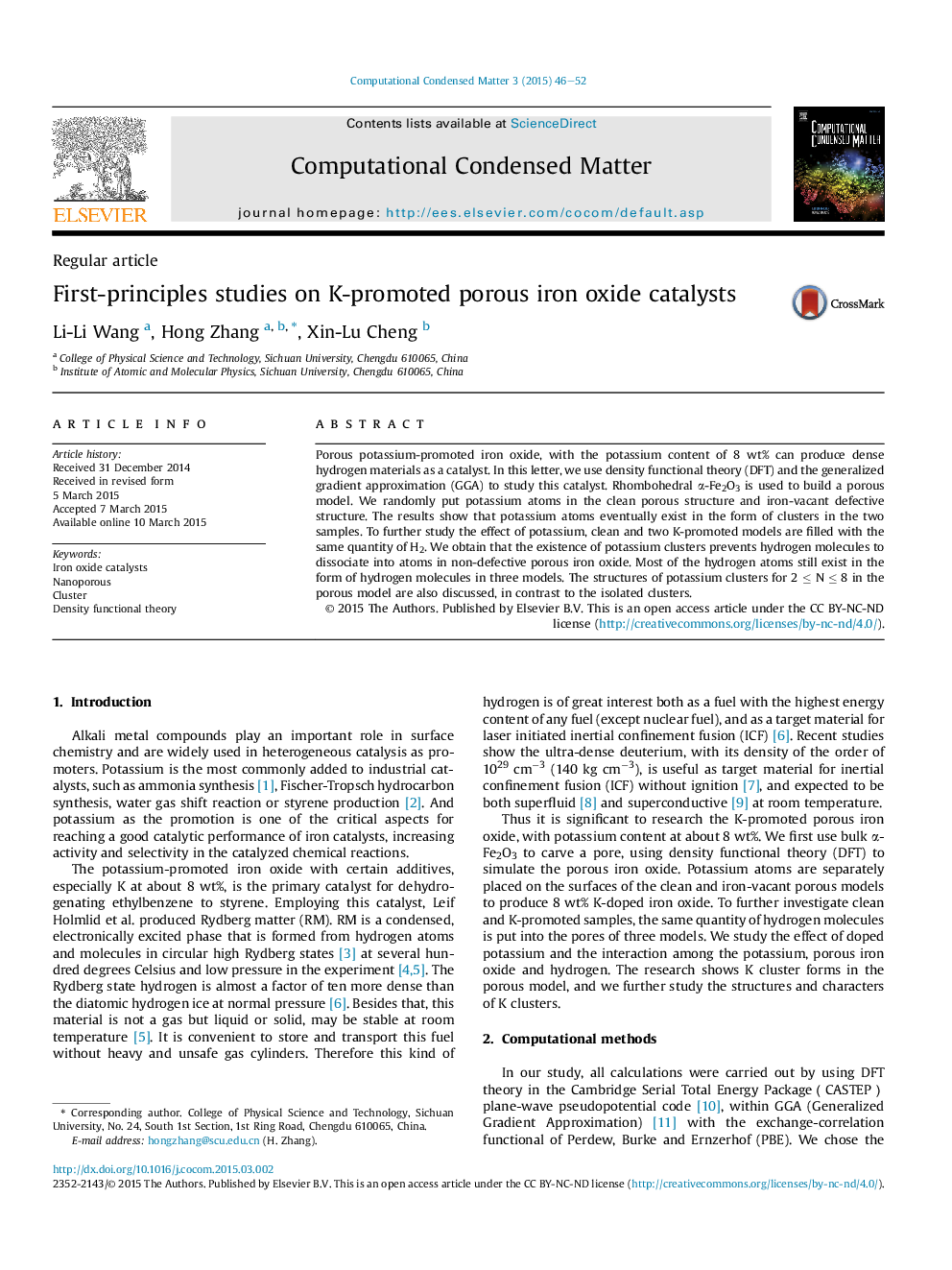| Article ID | Journal | Published Year | Pages | File Type |
|---|---|---|---|---|
| 1559687 | Computational Condensed Matter | 2015 | 7 Pages |
Abstract
Porous potassium-promoted iron oxide, with the potassium content of 8 wt% can produce dense hydrogen materials as a catalyst. In this letter, we use density functional theory (DFT) and the generalized gradient approximation (GGA) to study this catalyst. Rhombohedral α-Fe2O3 is used to build a porous model. We randomly put potassium atoms in the clean porous structure and iron-vacant defective structure. The results show that potassium atoms eventually exist in the form of clusters in the two samples. To further study the effect of potassium, clean and two K-promoted models are filled with the same quantity of H2. We obtain that the existence of potassium clusters prevents hydrogen molecules to dissociate into atoms in non-defective porous iron oxide. Most of the hydrogen atoms still exist in the form of hydrogen molecules in three models. The structures of potassium clusters for 2 â¤Â N â¤Â 8 in the porous model are also discussed, in contrast to the isolated clusters.
Related Topics
Physical Sciences and Engineering
Materials Science
Materials Science (General)
Authors
Li-Li Wang, Hong Zhang, Xin-Lu Cheng,
